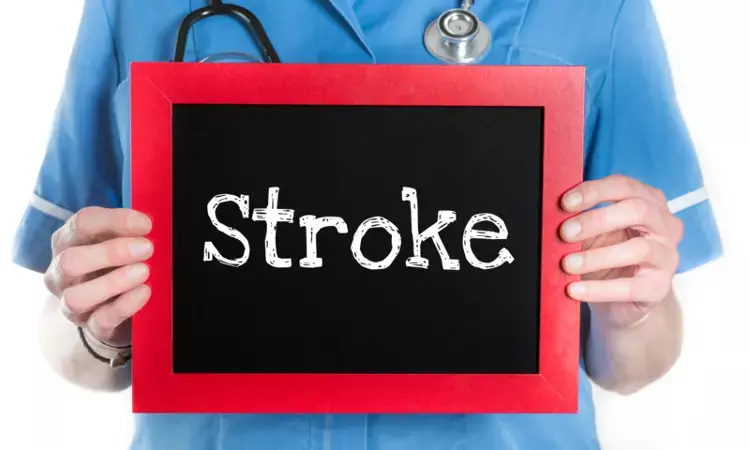- Home
- Medical news & Guidelines
- Anesthesiology
- Cardiology and CTVS
- Critical Care
- Dentistry
- Dermatology
- Diabetes and Endocrinology
- ENT
- Gastroenterology
- Medicine
- Nephrology
- Neurology
- Obstretics-Gynaecology
- Oncology
- Ophthalmology
- Orthopaedics
- Pediatrics-Neonatology
- Psychiatry
- Pulmonology
- Radiology
- Surgery
- Urology
- Laboratory Medicine
- Diet
- Nursing
- Paramedical
- Physiotherapy
- Health news
- Fact Check
- Bone Health Fact Check
- Brain Health Fact Check
- Cancer Related Fact Check
- Child Care Fact Check
- Dental and oral health fact check
- Diabetes and metabolic health fact check
- Diet and Nutrition Fact Check
- Eye and ENT Care Fact Check
- Fitness fact check
- Gut health fact check
- Heart health fact check
- Kidney health fact check
- Medical education fact check
- Men's health fact check
- Respiratory fact check
- Skin and hair care fact check
- Vaccine and Immunization fact check
- Women's health fact check
- AYUSH
- State News
- Andaman and Nicobar Islands
- Andhra Pradesh
- Arunachal Pradesh
- Assam
- Bihar
- Chandigarh
- Chattisgarh
- Dadra and Nagar Haveli
- Daman and Diu
- Delhi
- Goa
- Gujarat
- Haryana
- Himachal Pradesh
- Jammu & Kashmir
- Jharkhand
- Karnataka
- Kerala
- Ladakh
- Lakshadweep
- Madhya Pradesh
- Maharashtra
- Manipur
- Meghalaya
- Mizoram
- Nagaland
- Odisha
- Puducherry
- Punjab
- Rajasthan
- Sikkim
- Tamil Nadu
- Telangana
- Tripura
- Uttar Pradesh
- Uttrakhand
- West Bengal
- Medical Education
- Industry
Cardiac CT a promising tool to detect embolic source in ischemic stroke

Cardiac computed tomography angiography appears to be a promising tool for the detection of intra-cardiac thrombi along with standard care for patients having Embolic stroke of undetermined source. The study was published in the European Stoke Journal.
Embolic stroke of the undetermined source is an evolving stroke subtype. It poses a great clinical challenge for a secondary prevention strategy. Cardiac imaging is the foundation of embolic stroke workup for diagnosing high-risk cardio-embolic sources. Cardiac computed tomography angiography (CCTA) is a developing imaging technique having a high diagnostic performance for detecting intra-cardiac thrombus. There is uncertainty on the result of using CCTA along with standard care in ESUS workup. So, researchers conducted a study to assess the utility of CCTA in detecting intra-cardiac thrombi in the routine ESUS workup.
A retrospective observational analysis of ESUS cases that are managed in the vascular neurology unit between 2019 and 2021 was done. Within this ESUS registry, consecutive patients undergoing CCTA were included and carefully analyzed.
Results:
- 1066 Ischemic stroke (IS) cases were treated and evaluated.
- 266/1066 (25%) met ESUS criteria and 129/266 (48%) underwent CCTA.
- Intra-cardiac thrombus was detected by CCTA in 22/129 patients. Out of which, left ventricular thrombus (LVT) in 13 (10.1%) patients, left atrial appendage (LAA) thrombus in 8 (6.2%) patients, and left atrial (LA) thrombus in 1 (0.8%) patient.
- Only 5/22 (23%) of these thrombi were suspected, but could not be confirmed, in trans-thoracic echocardiogram (TTE).
- Among CCTA-undergoing patients, 27/129 wereindicatecation for commencing anticoagulation (AC) treatment, rather than anti-platelets.
- In favor of CCTA implementation, 22/266 patients within the entire ESUS cohort were diagnosed with intra-cardiac thrombus, otherwise missed.
Thus, CCTA proves to be a promising tool for detecting intra-cardiac thrombi in addition to standard care in ESUS patients and can thus alter the secondary prevention strategy in a considerable proportion of patients.
Further reading: https://doi.org/10.1177/23969873221099692
Barnea R, Agmon IN, Shafir G, Peretz S, Mendel R, Naftali J, Shiyovich A, Kornowski R, Auriel E, Hamdan A; Cardiac CT for Undetermined Source of Embolic Stroke (CaCTUSES) Working Group. Cardiac CT for intra-cardiac thrombus detection in an embolic stroke of undetermined source (ESUS). Eur Stroke J. 2022 Sep;7(3):212-220.
BDS, MDS
Dr.Niharika Harsha B (BDS,MDS) completed her BDS from Govt Dental College, Hyderabad and MDS from Dr.NTR University of health sciences(Now Kaloji Rao University). She has 4 years of private dental practice and worked for 2 years as Consultant Oral Radiologist at a Dental Imaging Centre in Hyderabad. She worked as Research Assistant and scientific writer in the development of Oral Anti cancer screening device with her seniors. She has a deep intriguing wish in writing highly engaging, captivating and informative medical content for a wider audience. She can be contacted at editorial@medicaldialogues.in.
Dr Kamal Kant Kohli-MBBS, DTCD- a chest specialist with more than 30 years of practice and a flair for writing clinical articles, Dr Kamal Kant Kohli joined Medical Dialogues as a Chief Editor of Medical News. Besides writing articles, as an editor, he proofreads and verifies all the medical content published on Medical Dialogues including those coming from journals, studies,medical conferences,guidelines etc. Email: drkohli@medicaldialogues.in. Contact no. 011-43720751




